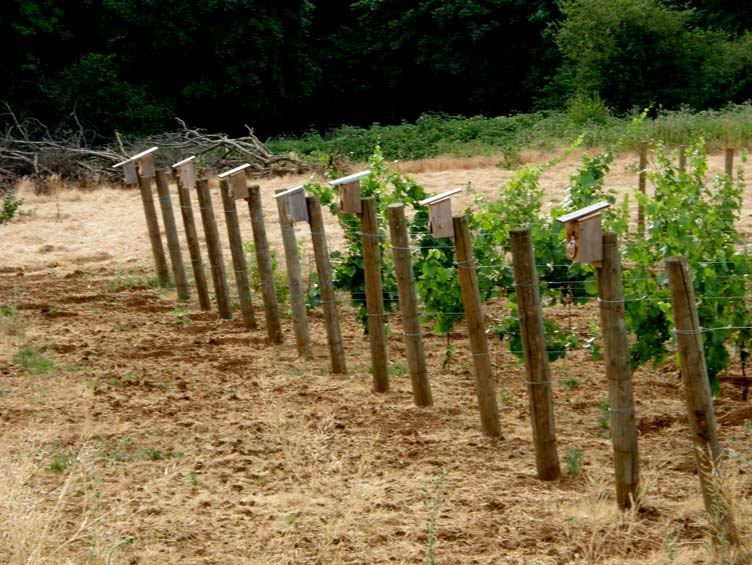Along the Oregon Pinot Trail
Oregon’s Willamette Valley has the most in common with Burgundy than any North American wine growing
region. Some have called the Willamette Valley, “Burgundy of the West.” The midpoint of the Willamette Valley
lies at 45 degrees north latitude, the same as for Burgundy’s Cote d’Or. Vintages in Oregon tend to parallel
those in Burgundy. Oregon wineries have always been small, family owned affairs, just like in Burgundy. The
Dijon clones of Pinot Noir were first brought into this country by workers at Oregon State University who had a
close working relationship with the Burgundians. Reidel makes a distinctive Pinot Noir glass for Burgundy and
Oregon.
Oregon’s wine culture has always embraced Burgundian influence and is largely responsible for Oregon’s
success. The first winegrowers who came to the Willamette Valley in the 1960s and 1970s were not only
deterred by the unaffordable land prices in California at the time, but also by California winemaking which used
pumps, filters and technology suitable for Cabernet Sauvignon, but undesirable for Pinot Noir. In being among
the first to embrace exclusive use of French oak barrels in the New World, it was only natural that Oregonians
looked to Burgundy for guidance.
By 1981, Oregon had begun its annual Steamboat Conference with the original intention of sharing information
between winemakers from Oregon and California. It was the Burgundians who began attending this event that
created the most impression on Oregon winemakers. Robert Drouhin of Domaine Drouhin in Beaune, France,
had visited Oregon in the 1970s, and in 1987, bought 180 acres in the Dundee Hills. Named Domaine Drouhin
Oregon, this French-inspired winery brought vindication and notoriety to the Oregon wine industry and helped
to foster a long-standing interchange between Oregonians and Burgundians. Véronique Drouhin-Boss has
been the winemaker at Domaine Drouhin Oregon since its inception and was one of the first French-born
winemakers in Oregon. Many others have followed suite, including Laurent Montalieu (WillaKenzie, Soléna
Cellars), Jacques Tardy (Torii Mor), and Isabelle Dutartre (DePonte Cellars). Most recently, world-renowned
Burgundian winemaker, Dominique Lafon of Meursault, chose Oregon for his New World winemaking
consultancy project, The Evening Lands Vineyards, whose stateside winemaker is Frenchwoman, Isabelle
Meunier.
The question that is often posed after considering all this French influence and camaraderie, do Pinot Noirs
from the Willamette Valley resemble or even mirror their brethren from Burgundy? Well, yes and no. The best
Oregon Pinot Noirs can and do approximate the quality of many French bourgogne, village and premier cru
level wines. There are enough differences between the two regions, however, to insure that the wines are
distinct. The terroir is disparate among the two winegrowing regions, with the Cote d’Or possessing limestoneladen
soils while Oregon’s soils are basaltic, sedimentary or loess in type with little underlain limestone. Rain
is not unusual in the summer in Burgundy, but infrequent in the Willamette Valley. Burgundy vineyards are a
clonal mix known as selection massale, while Oregon vineyards are composed of distinct blocks of separate
clones and lack the age of Burgundian vineyards. Burgundy vineyards cannot be irrigated, while many of
Oregon’s vineyards receive a drink of water occasionally toward the end of the growing season. Oregon
vineyards tend to have wide spacing of vines in contradistinction to the high-density plantings in Burgundy.
It makes little sense to spend time comparing Oregon Pinot Noir and red Burgundy. We should celebrate each
for what it is, not for what it isn’t. If a distinction must be made, this quote by Paul White best sums it up: “The
Old World prizes structure and texture over fruit, with a liking for subtle, savory, gamy (at times bordering on
filth), earthy characters, whereas New World wine is mostly about fruit.” Jay McInerny put it another way, “Take
Pinot Noir to the New World and it often goes native in an alarming way, shedding its Gallic intellectual vigor
and displaying a fruity, flirty New World hedonism.”
I have digressed. I spent a marvelous week before the recent International Pinot Noir Celebration traveling the
back roads of Pinot country in the Willamette Valley. I met and renewed friendships with many hard working
and passionate winegrowers and I tasted some stunning Pinot Noirs from both the 2007 and 2008 (mostly from
barrels) vintages. There is a unique sense of freedom and pioneering spirit that comes with driving the
picturesque unpaved roads of wine country to find a small, artisan producer of Pinot Noir. In the following
pages, I will review my most memorable visits and wines. I urge you to followup these reports with your
support, seek out these wines, and pay a visit to these producers. Remember, wines represent people and
place and your enjoyment of drinking wine will be greatly enhanced when you look beyond the wine to
embrace who crafted the wine and where it originated.




